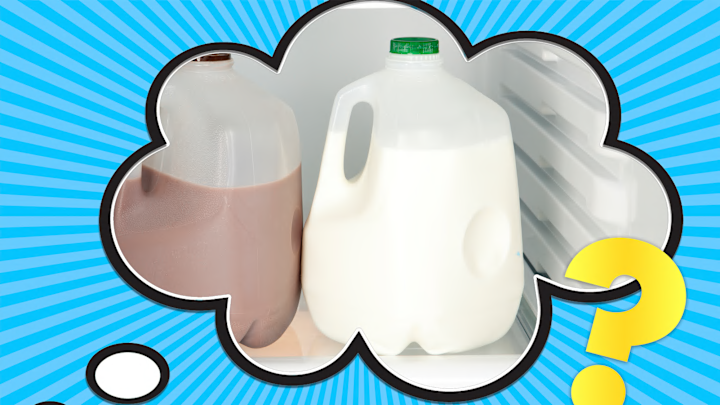Whether you buy whole, 2 percent, or skim, the plastic containers milk comes in all share something in common: There’s an inverted circle built into one side of the jug where a smooth, flat plane would normally be. If you drink milk, you’ve probably seen this, but you may not know the ingenious reason behind the design.
According to Distractify, the concave circle on the side of a milk jug provides structural integrity. A full gallon of milk with flat, rigid sides may be fine sitting in your fridge, but if you were to drop it on the floor, it would likely rupture. The dimple can prevent that from happening. When a jug hits the ground, the circle warps outward and gives the milk a place to go when it expands on impact. Incorporating some literal wiggle room into the design makes the container more flexible, and therefore more durable.
The same feature comes in handy as the milk approaches its expiration date. Milk contains non-harmful microbes that expel gases over time. As these gases accumulate, pressure in the jug builds, and the flexible dimple stops the jug from exploding. An even more extreme example of this can be observed when you put a milk jug in the freezer. Liquids expand when frozen—that’s why if you try freezing a bottle or can of soda, you’ll end up with a shattered container and a mess in your freezer. The inverted circle on a milk jug accommodates this expansion, so you can stick your milk directly in the freezer without transferring it to a different container.
The dimpled milk jug is a common sight in the United States, but it’s not the only way milk sellers keep their product protected. In Canada, plastic milk bags became the less-fragile alternative to glass jugs thanks to the metric system.
Have you got a Big Question you'd like us to answer? If so, let us know by emailing us at bigquestions@mentalfloss.com.
Discover the Answers to More Fascinating Big Questions:
A version of this story was originally published in 2020 and has been updated for 2023.
